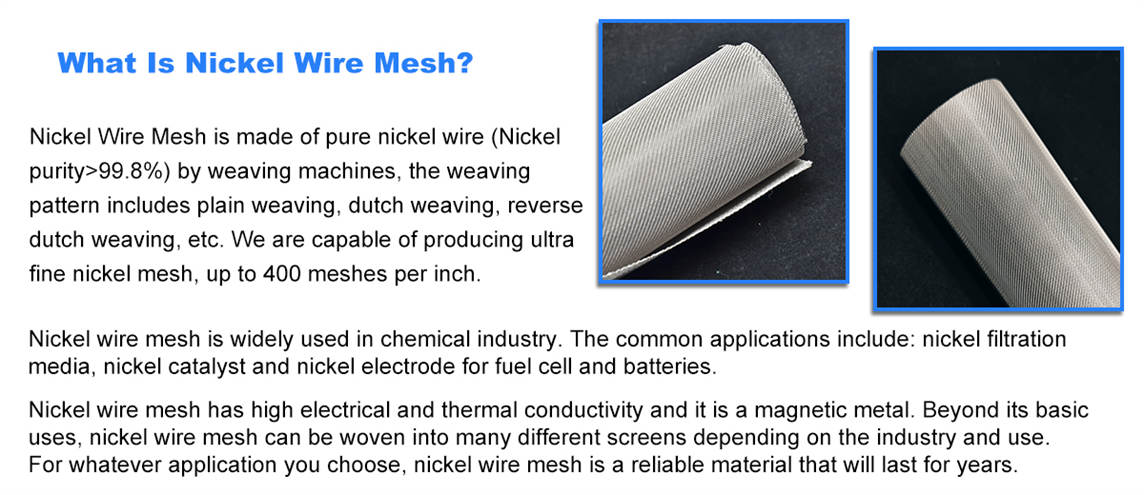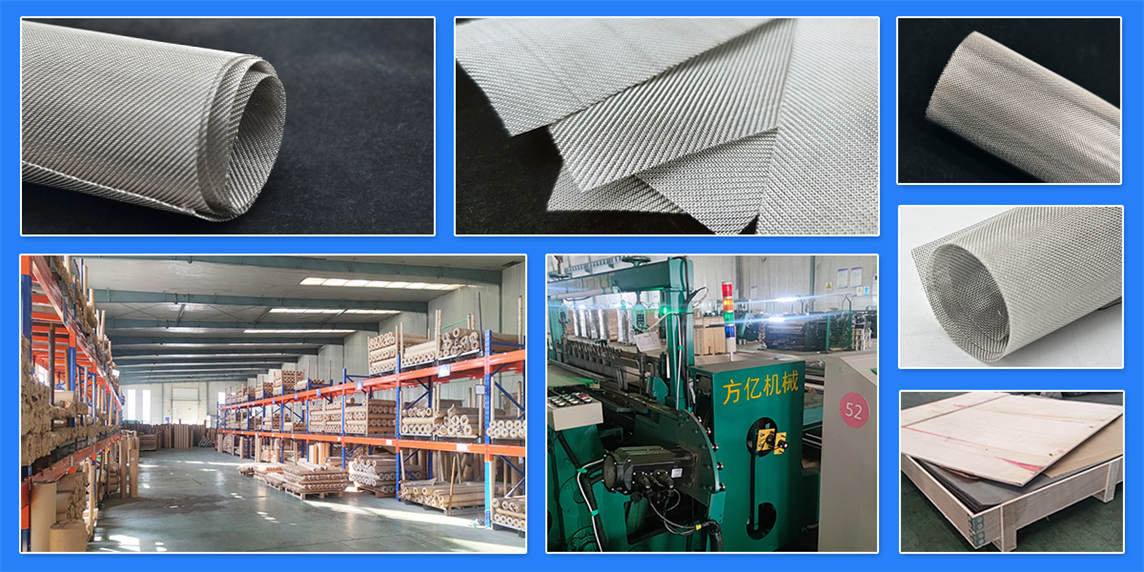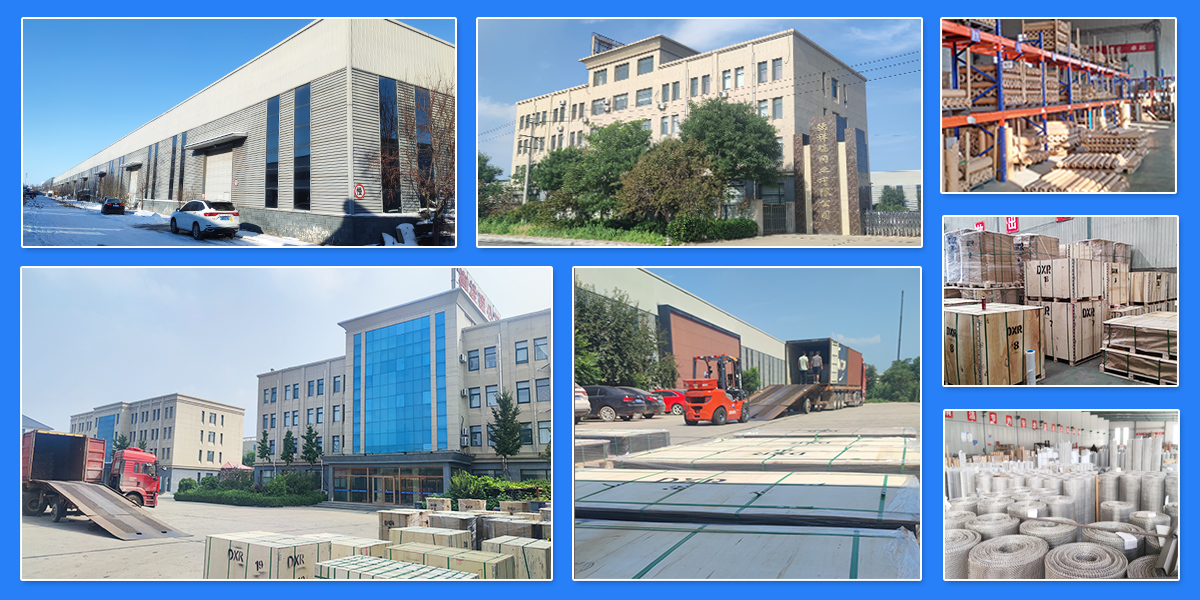Nickel200/201 wire mesh and nickel200/201 expanded metal
What is Nickel Mesh?
Nickel mesh has two kinds: Nickel wire mesh and nickel expanded metal. Nickel wire mesh is made by weaving pure nickel wire,nickel expanded metal is made by expanding pure nickel foil.
| Grade | C (Carbon) | Cu (Copper) | Fe (Iron) | Mn (Manganese) | Ni (Nickel) | S (Sulfur) | Si (Silicon) |
| Nickel 200 | ≤0.15 | ≤0.25 | ≤0.40 | ≤0.35 | ≥99.0 | ≤0.01 | ≤0.35 |
| Nickel 201 | ≤0.02 | ≤0.25 | ≤0.40 | ≤0.35 | ≥99.0 | ≤0.01 | ≤0.35 |
| Nickel 200 vs 201: In comparison to nickel 200, nickel 201 has almost the same nominal elements. However, its carbon content is low. | |||||||
Some of the key properties and features of pure nickel wire mesh are:
- High heat resistance: Pure nickel wire mesh can withstand temperatures of up to 1200°C, making it suitable for high-temperature environments such as furnaces, chemical reactors, and aerospace applications.
- Corrosion resistance: Pure nickel wire mesh is highly resistant to corrosion from acids, alkalis, and other harsh chemicals, making it ideal for use in chemical processing plants, oil refineries, and desalination plants.
- Durability: Pure nickel wire mesh is strong and durable, with good mechanical properties that ensure it retains its shape and provides long-lasting performance.
- Good conductivity: Pure nickel wire mesh has good electrical conductivity, making it useful for applications in the electronics industry.
Nickel wire mesh and electrodes play a pivotal role in the hydrogen production industry, particularly in electrolyzers. Some key applications include:
Electrolysis: Nickel mesh serves as a highly efficient and durable electrode in electrolysis, facilitating the separation of water into hydrogen and oxygen.
Fuel Cells: Nickel electrodes are used in fuel cells to catalyze hydrogen oxidation and produce electrical energy with high efficiency.
Hydrogen Storage: Nickel-based materials are employed in hydrogen storage systems due to their ability to absorb and release hydrogen gas reversibly.

























